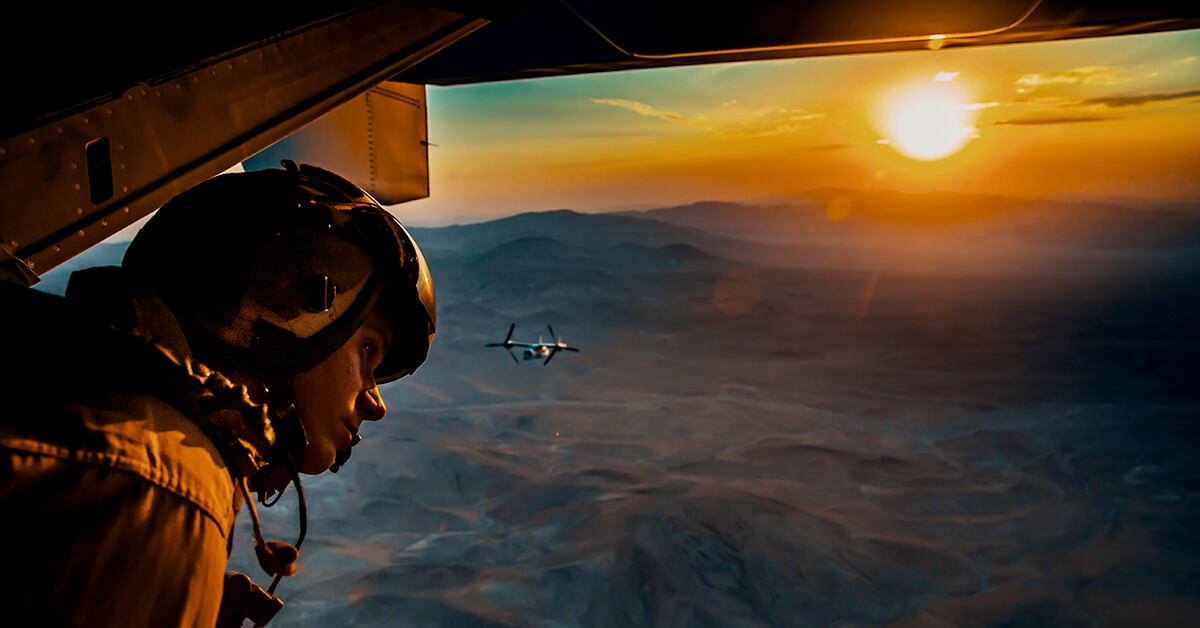A recent government report said that the Navy and Corps’ pilot shortage likely is to carry into 2023.
This is despite recent steps taken by the services to stop the bleeding, like generous bonuses dished out by the Corps over the past few years.
Fiscal year 2018 was the first time the Corps started dolling out aviation bonuses since 2011.
The ‘take rate,’ or percentage of eligible pilots that accepted those bonuses, was roughly 78 percent, according to Maj. Craig Thomas, a spokesman for Manpower and Reserve Affairs.
The Corps rolled out bonuses for fiscal 2019 as well, but says it is too early to crunch those numbers.
Much like the Air Force, the Navy and the Corps are losing pilots to highly competitive civilian airlines enticing military pilots with fatter paychecks. Other issues leading to the drain of the military’s experienced pilots include morale and family issues, and insufficient flight time.
The Government Accountability Office, or GAO, found that the Corps’ shortfall of fighter pilots quadrupled from 6 percent to 24 percent from 2006 to 2017. The Navy experienced a similar glut, seeing a “shortage of first operational tour fighter pilots more than doubled from 12 percent in fiscal year 2013 to 26 percent in fiscal year 2017,” the report stated.
“[S]ervice officials attributed the pilot shortages to reduced training opportunities and increased attrition due to career dissatisfaction, among other factors,” the report reads.
According to the report, Navy and the Corps took steps to ensure that deploying squadrons were fully staffed.
Those steps included putting senior pilots in junior positions and increasing their deployment tempo.
“However, we reported that squadron leaders and fighter pilots said that these approaches had a negative impact on the fighter pilot training and retention and ultimately may be exacerbating the situation,” the GAO report reads.

Over the past two years the Corps has been dishing out lucrative bonuses to lure pilots into staying in the cockpits of Marine aircraft.
The bonuses in fiscal 2018 were nearly $40,000, but only targeted at pilots of the Corps’ next-generation aircraft like the MV-22s and F-35s. AV-8B Harrier pilots and F/A-18 Hornet pilots also were eligible.
In fiscal 19, the Corps rolled out a far broader aviation bonus that pretty much included everyone from KC-130 pilots to Hueys.
The Corps also dished out more money for 2019 bonuses. Pilots could net nearly $200,000, depending on length of contract accepted and aircraft platform.
The Corps also has been trying to overhaul aircraft maintenance issues to keep more fighters in the sky and increase flight hours of pilots — a big issue for many pilots who say they don’t get to fly enough.
Part of the plan to keep the Corps’ aircraft in the skies is to retire legacy platforms and reduce the maintenance and supply burden on aircraft maintainers.
“In fact right now we’ve got too many Hornets; we’ve got too many airplanes,” said Marine Commandant Gen. Robert B. Neller during a January discussion at the Center for Strategic & International Studies in Washington. “We need to get rid of them because we don’t have time to fix them.”
Defense News reported that Secretary of Defense Jim Mattis has ordered the Air Force and Navy to get four fighters, the F-35, F-22, F-16 and F-18, to an 80 percent mission capability rate by the end of September.
Secretary of the Navy Richard V. Spencer described that goal as a “stretch goal” to lawmakers on Dec. 12. “But it is a stretch goal we will take,” he said.
Shawn Snow is the senior reporter for Marine Corps Times and a Marine Corps veteran.





